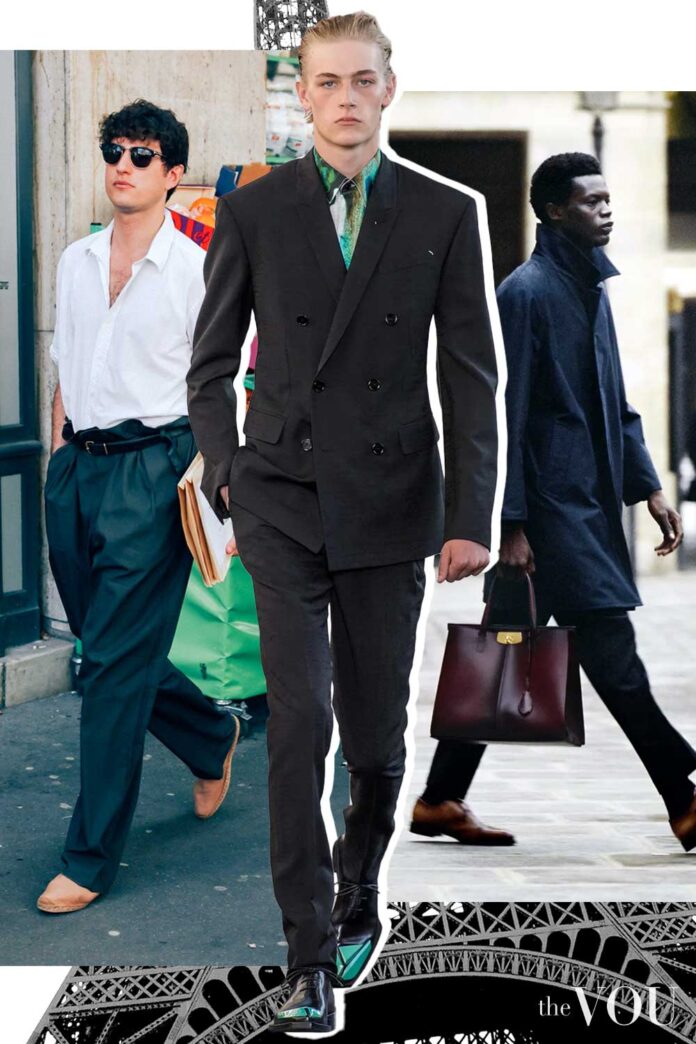Parisian Chic style is a characteristic way of dressing rooted in the upper echelons of French society in the early 20th century.
Rooted in the rich cultural tapestry of French high society, this distinctive approach to dressing combines understated elegance with a touch of insouciance that is quintessentially Parisian.
What is Parisian Chic Style?
In simple terms, Parisian Chic or French Chic fashion style is characterised by deliberately pairing impeccably tailored, neutral-toned garments with statement accessories.
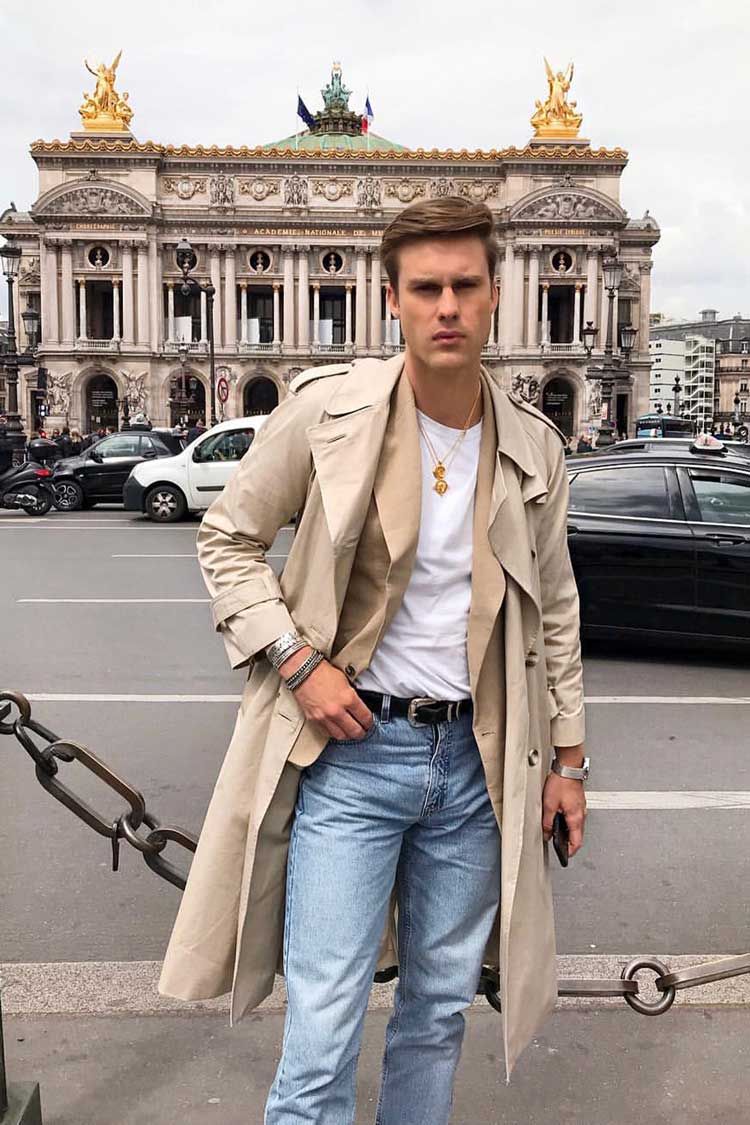 |
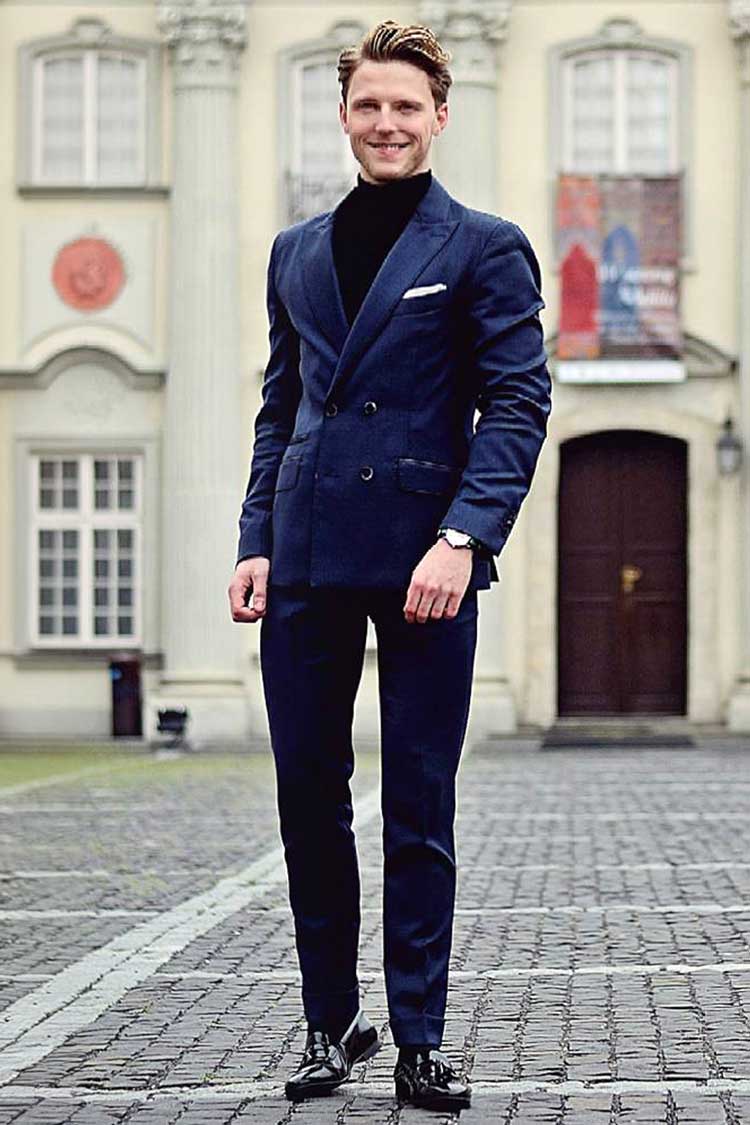 |
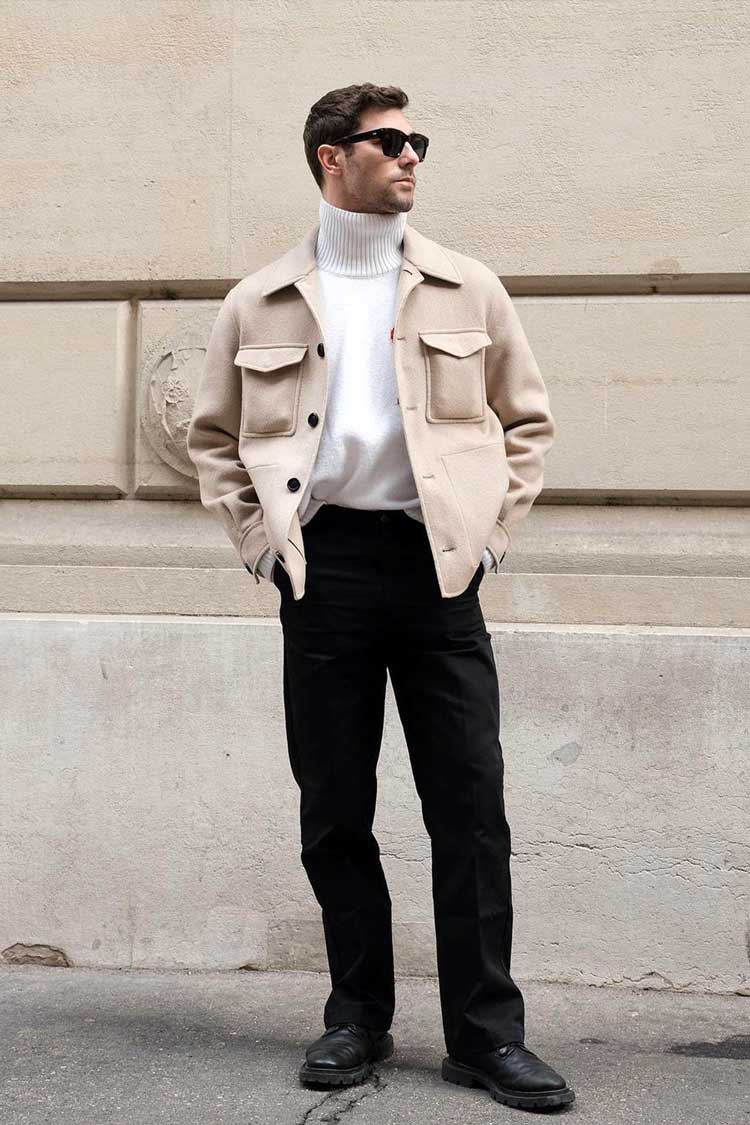 |
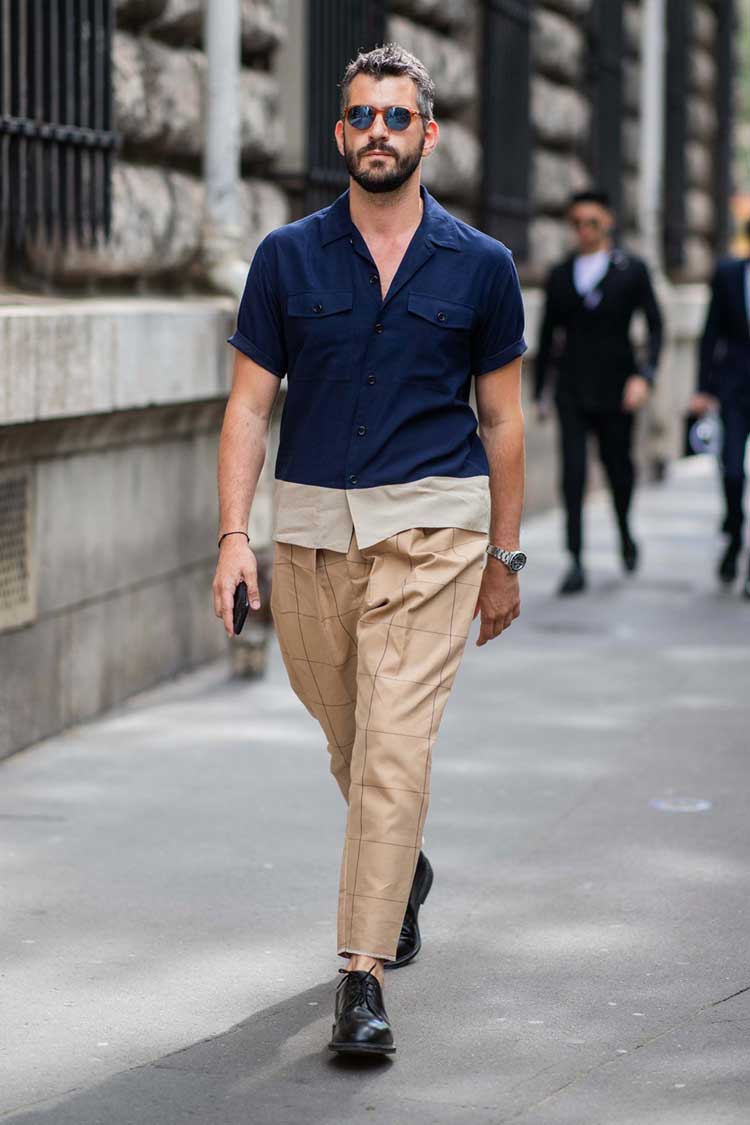 |
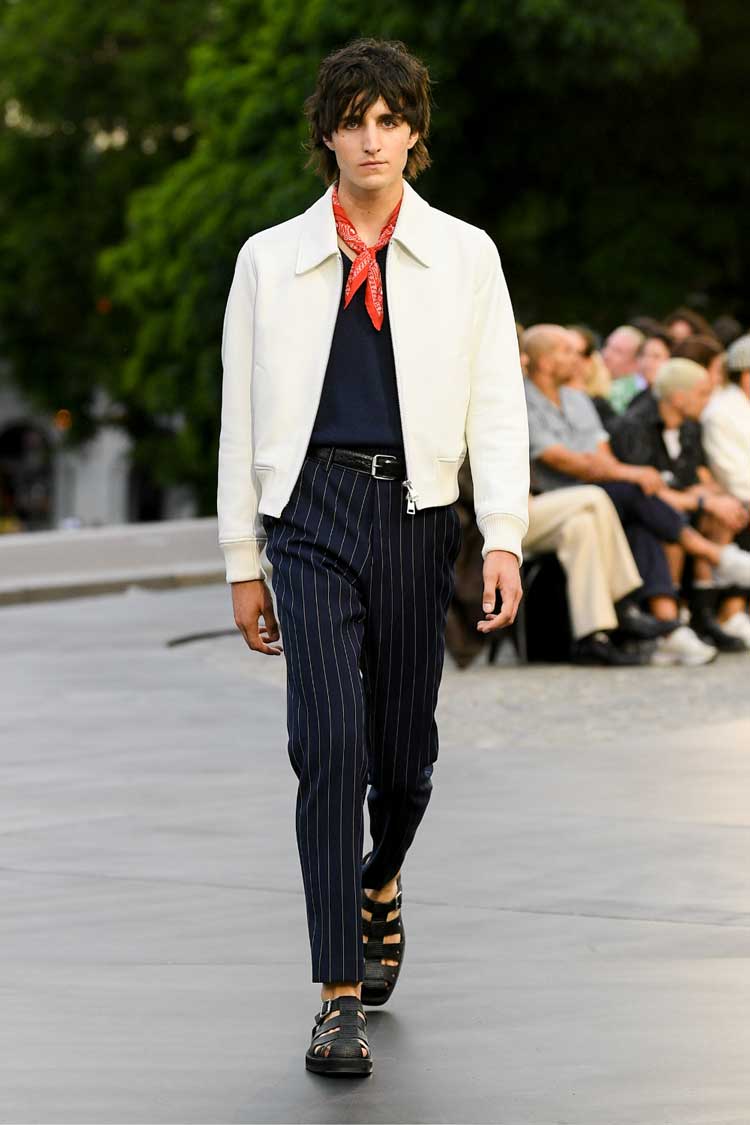 |
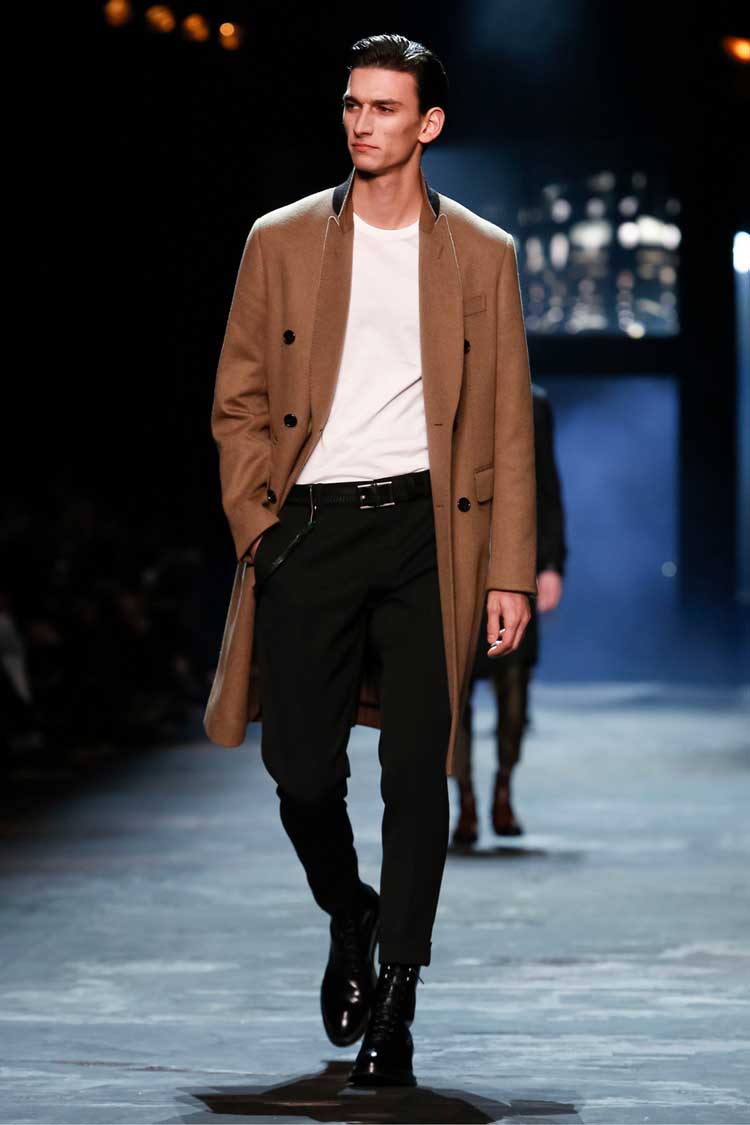 |
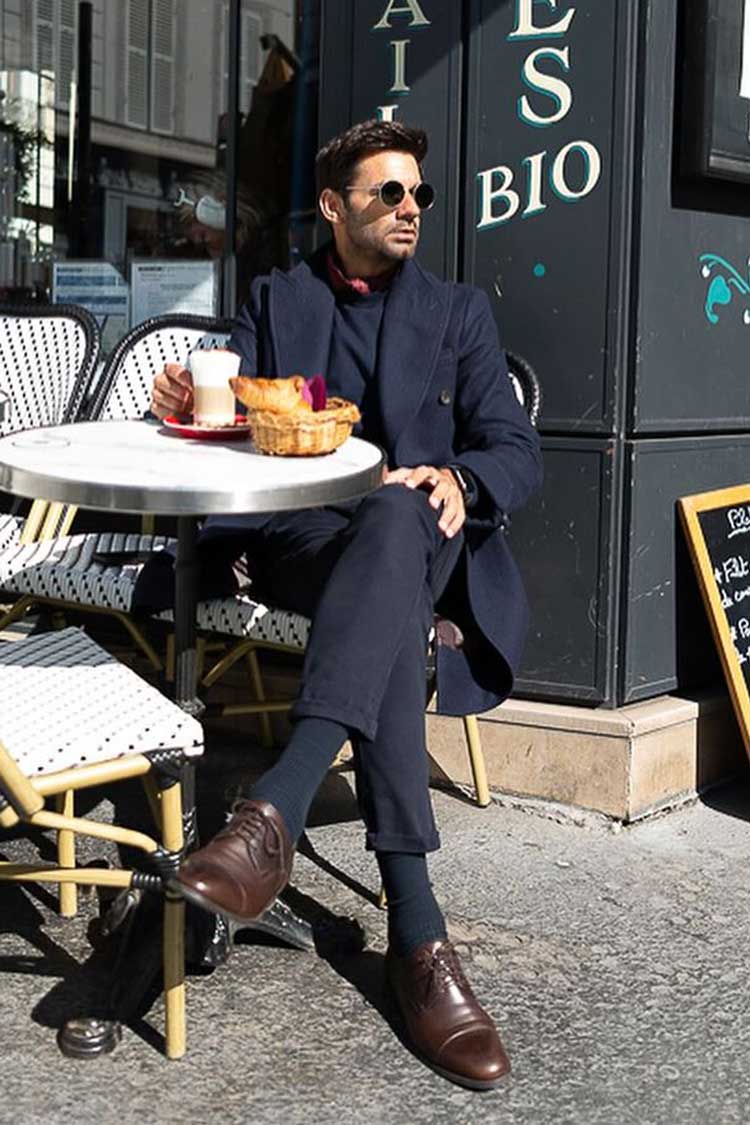 |
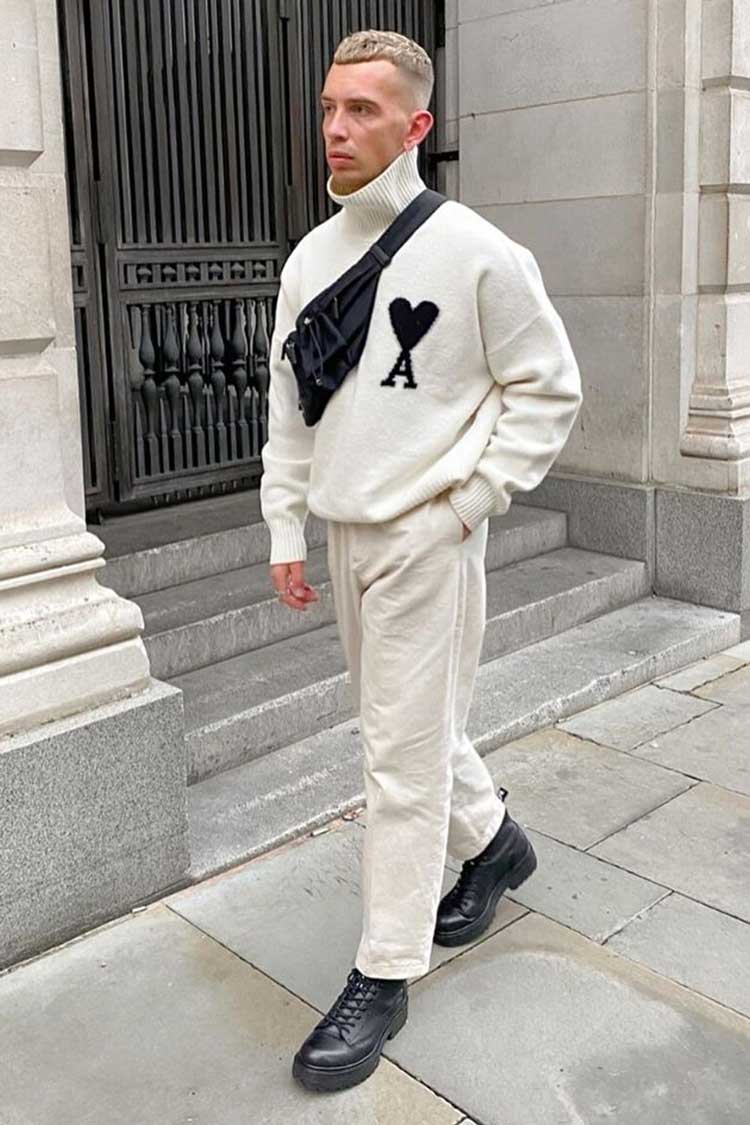 |
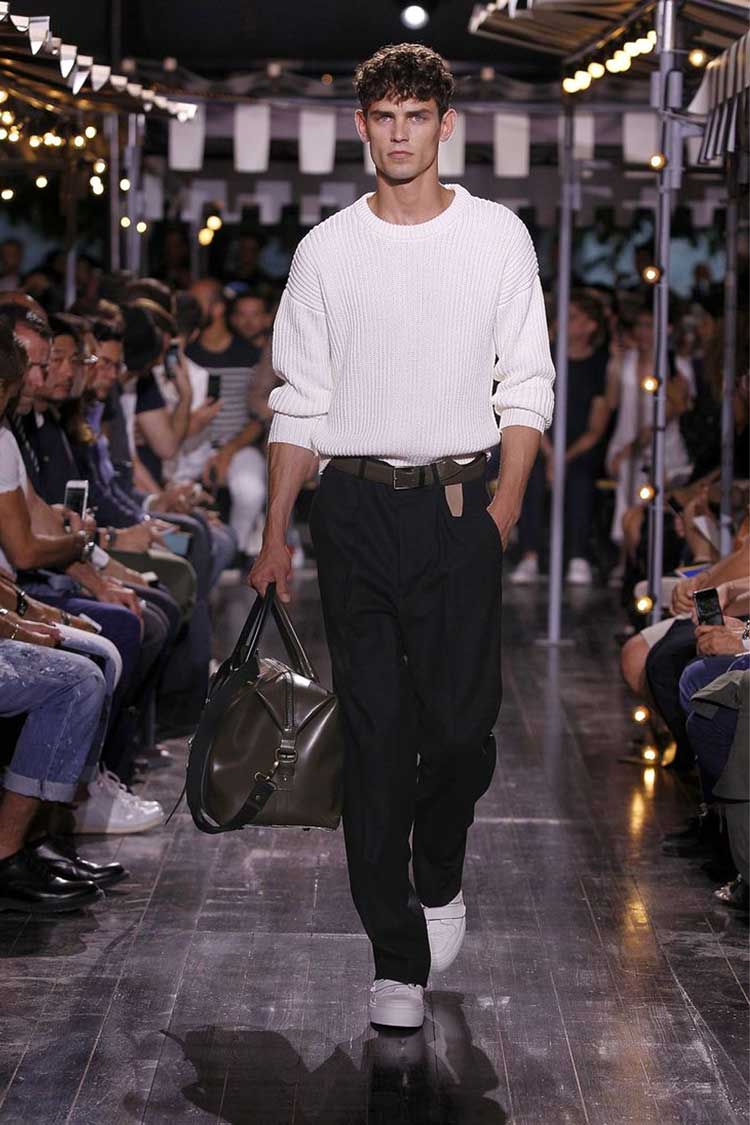 |
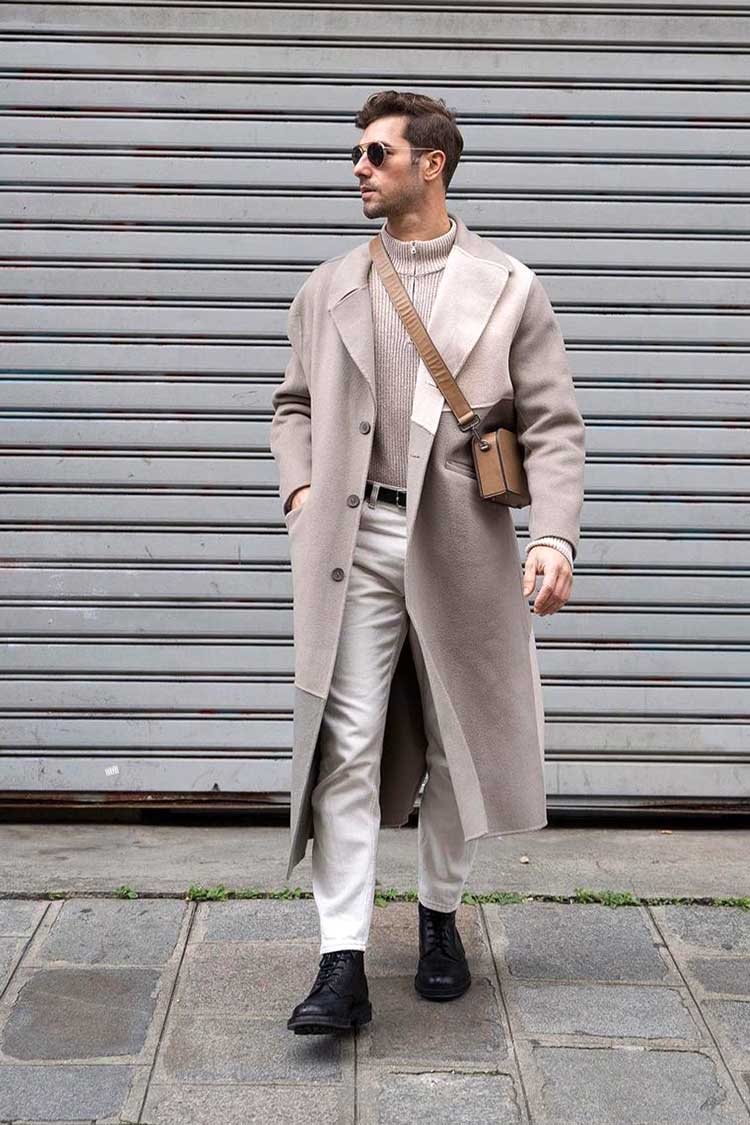 |
Influenced by iconic figures such as Coco Chanel and Yves Saint Laurent, the Parisian Chic way of dressing is the result of meticulous attention to fit, fabric quality, and proportion.
Evolved from the exclusive domain of the French aristocracy to a globally admired aesthetic, the key tenets of Parisian Chic style are:
Minimalism – A less-is-more approach favours clean lines, neutral colours, and a carefully edited wardrobe.
Quality – An emphasis on well-made garments that stand the test of time, often from respected French ateliers and brands.
Elegance – An overall sense of polish and refinement that appears effortless but results from meticulous attention to detail.
Parisian Chic Origin
The Parisian Chic style has roots in the Belle Époque era, which lasted from the late 19th to the early 20th centuries when Paris was the undisputed capital of art, culture, and fashion.
During this time, the upper classes set the standard for elegance, which gradually evolved into the more accessible yet still refined style we recognise today.
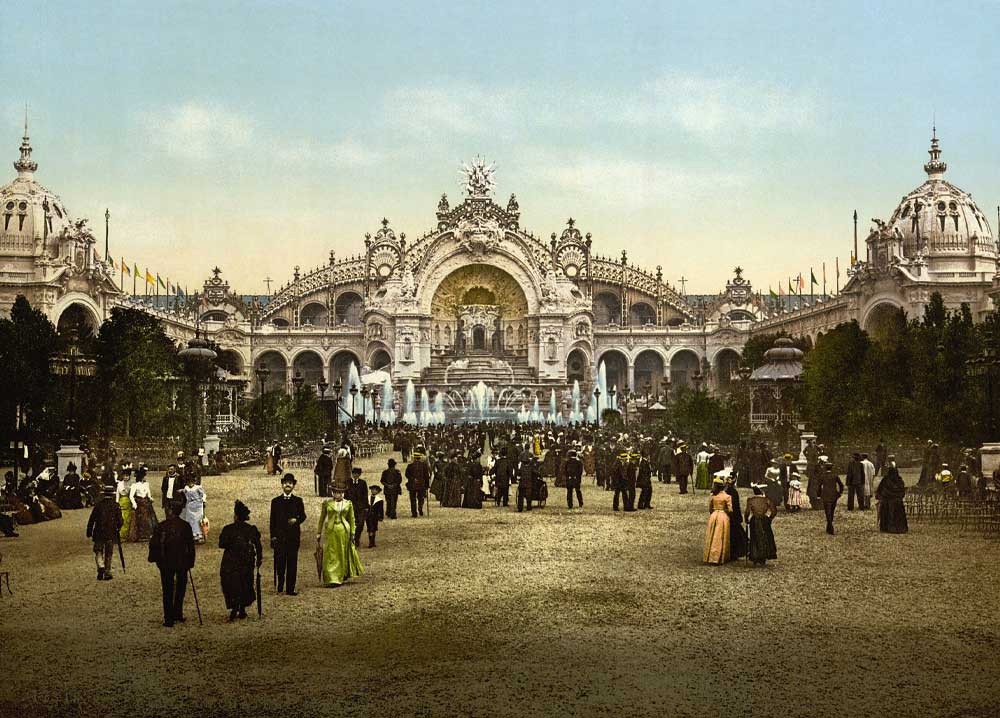
In the 1920s, Coco Chanel revolutionised women’s fashion by introducing more comfortable, practical designs that borrowed elements from menswear.
This marked a significant shift towards the minimalist, quality-focused approach that characterises Parisian Chic.
Later, in the 1960s, Yves Saint Laurent further blurred gender lines in fashion, introducing the iconic ‘Le Smoking’ tuxedo suit for women, cementing the idea that true style transcends traditional gender norms.
Nowadays, while the Parisian Chic style maintains its core principles, it has become less rigid shifting towards an elegant approach that allows for subtle subversion of fashion norms.
The essence of Parisian Chic style lies in a rare ability to showcase a crisp fashion style wrapped in an air of nonchalant and relaxed elegance.
| Characteristics | Description |
|---|---|
| Colour Palette | Predominantly neutral: black, navy, white, beige, grey |
| Silhouette | Tailored, slim-fit, emphasising the natural form |
| Fabrics | High-quality natural fibres: silk, wool, cotton, linen |
| Accessories | Understated, luxurious: silk scarves, leather bags, minimal jewellery |
| Attitude | Confident, nonchalant, slightly rebellious |
Parisian Chic Style Essential Garments
The foundation of Parisian Chic style lies in a carefully curated selection of high-quality, versatile garments that form the backbone of a chic Parisian wardrobe.
| Garment | Characteristics | Styling Notes |
|---|---|---|
| Outerwear | ||
| Navy Blazers | Single-breasted, structured shoulders, slim fit | Pair with chinos or over a Breton stripe shirt |
| Trench Coats | Classic beige, double-breasted, belted waist | Layer over any outfit for instant polish |
| Leather Jackets | Black or brown, fitted, minimal detailing | Wear over a T-shirt or layer with a scarf |
| Suits | ||
| Tailored Suits | Navy or charcoal, slim fit, notch lapel | Wear for formal occasions or separate the pieces |
| Shirts | ||
| White Dress Shirts | Crisp cotton, slim fit, semi-spread collar | Wear under a blazer or with sleeves rolled up for a casual look |
| Oxford Button-Down Shirts | Light blue or white, button-down collar | Pair with chinos for a casual yet refined look |
| Polo Shirts | Cotton piqué, neutral colours, fitted | Wear with chinos for a smart-casual ensemble |
| Breton Stripe Tops | Navy and white horizontal stripes, crew neck | Layer under a blazer or wear alone with chinos |
| Knitwear | ||
| Cashmere Sweaters | Fine knit, crew or V-neck, neutral colours | Layer over a shirt or wear alone with trousers |
| Black Turtlenecks | Fine-knit, slim fit, lightweight | Layer under a blazer or wear alone with trousers |
| Trousers | ||
| Slim-Fit Chinos | Neutral colours (beige, navy, olive), ankle-length | Style with loafers for a smart-casual look |
| Dark Wash Slim-Fit Jeans | Indigo or dark blue, slim fit, minimal distressing | Pair with a blazer for a smart-casual look |
| Gray Flannel Trousers | Medium grey, wool blend, straight leg | Pair with a blazer for a classic look |
| Footwear | ||
| White Sneakers | Clean lines, minimal branding, leather upper | Wear with casual outfits or dress down a suit |
| Accessories | ||
| Lightweight Scarves | Silk or fine wool, subtle patterns or solid colours | Drape casually around the neck for added sophistication |
Navy Blazers
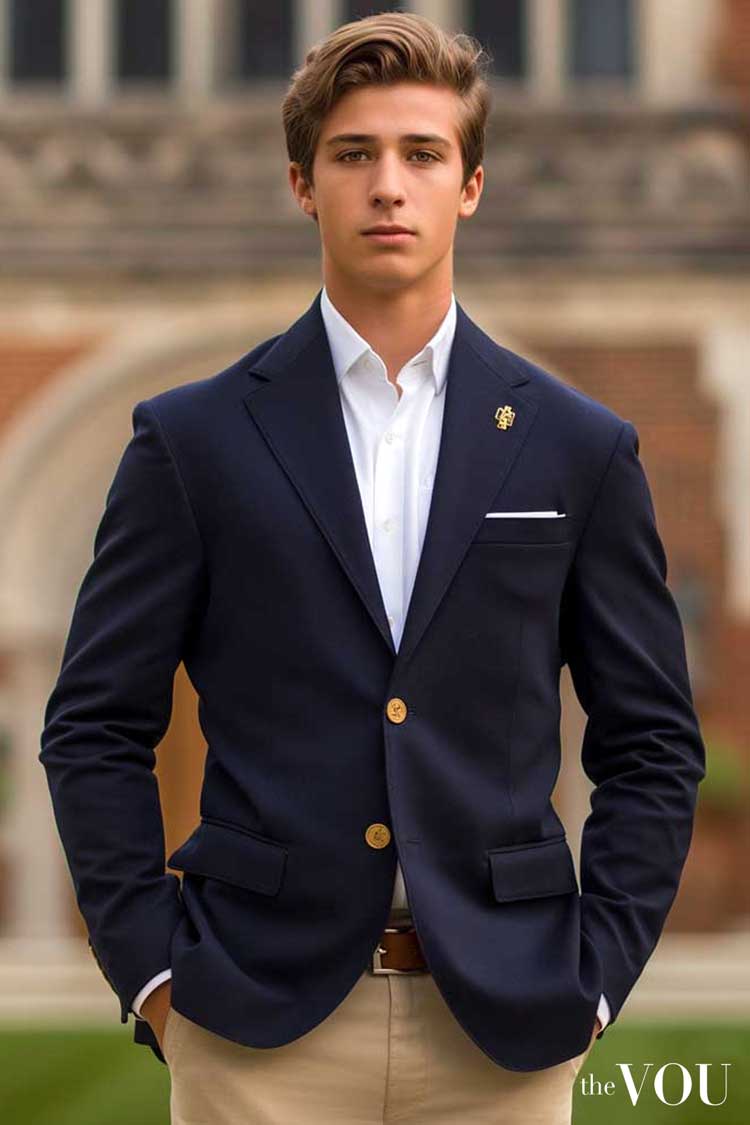
The navy blazer has stylistic roots in the French naval uniforms of the 19th century.
In the early 20th century, the Parisian elite adopted it as a symbol of nautical leisure, often worn at prestigious yacht clubs along the French Riviera.
The Duc de Windsor, a frequent visitor to Paris, popularised the navy blazer among the aristocracy as a versatile piece for casual and semi-formal occasions.
Trench Coats
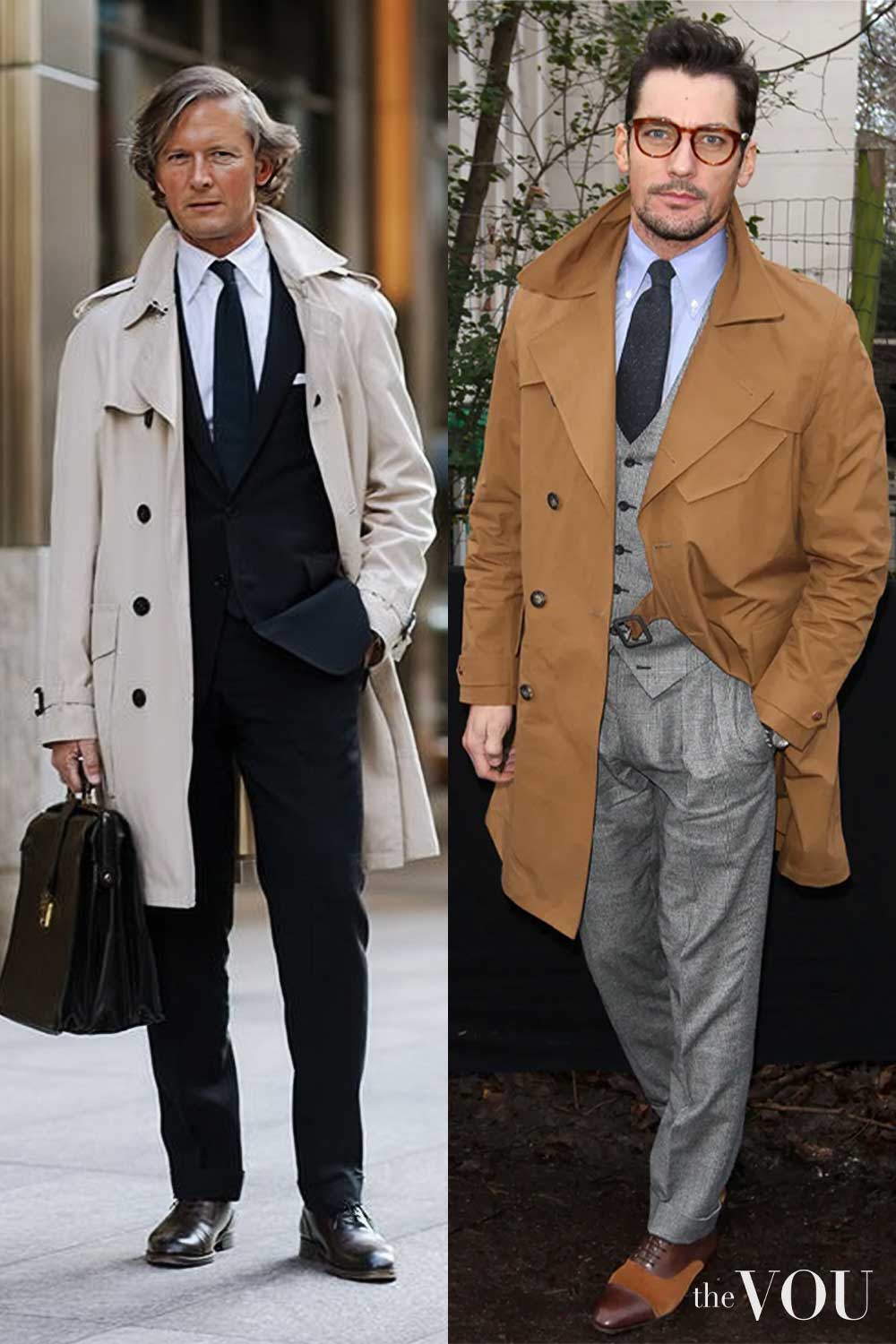
While the trench coat has British military origins, it was embraced by the French aristocracy after World War I.
Parisian fashion houses like Burberry and Aquascutum opened boutiques catering to the elite, who saw the trench as a symbol of wartime resilience and post-war sophistication.
It became a staple of the well-dressed Parisian gentleman, often seen on the boulevards of the 16th arrondissement.
Leather Jackets
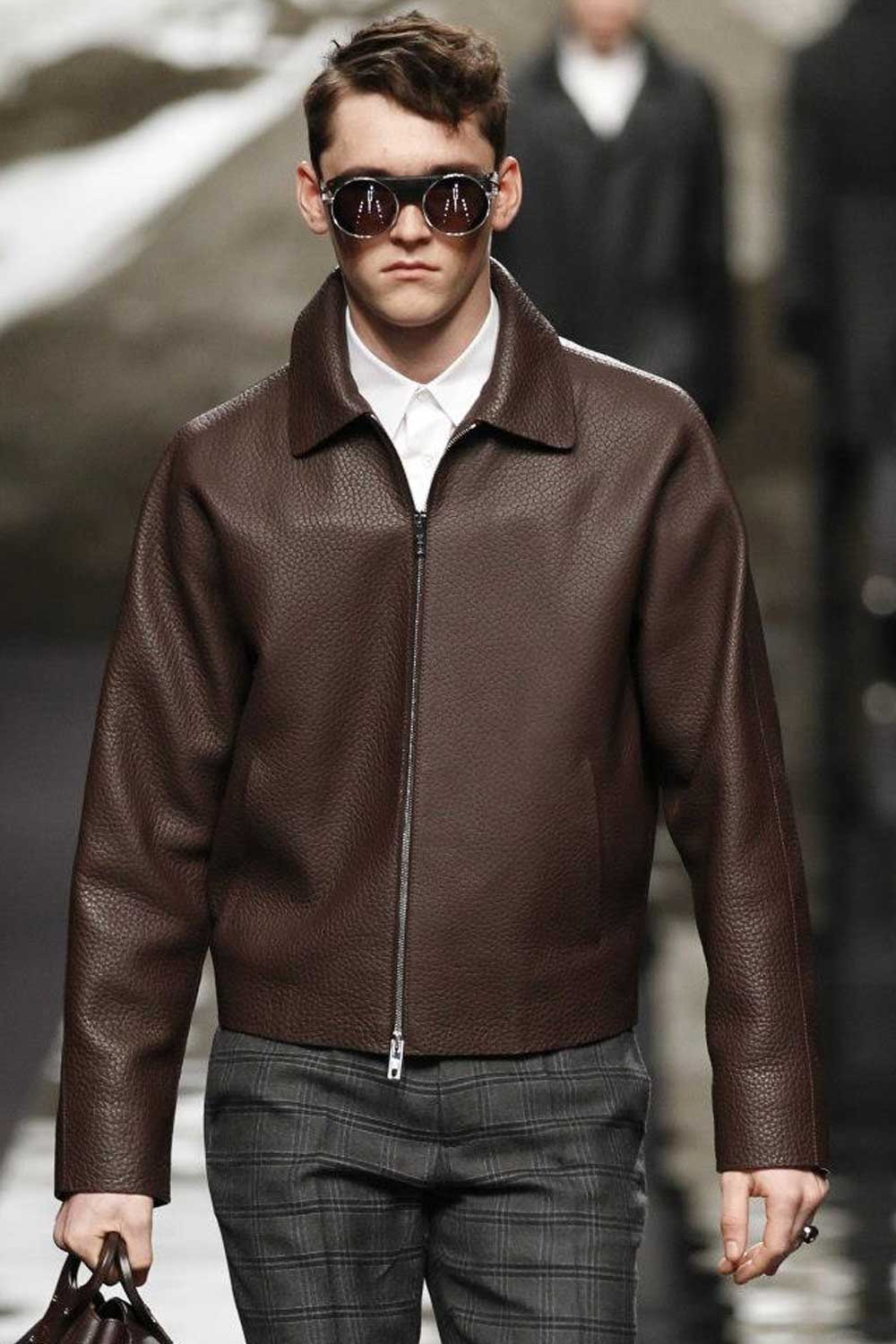
The leather jacket gained popularity in Paris during the 1960s when it was worn by affluent young rebels known as “les blousons noirs.”
It became a symbol of youthful rebellion even among the upper classes, often paired with tailored trousers for a juxtaposition of edge and elegance.
The style was particularly popular among the young aristocrats frequenting jazz clubs in Saint-Germain-des-Prés.
Tailored Suits
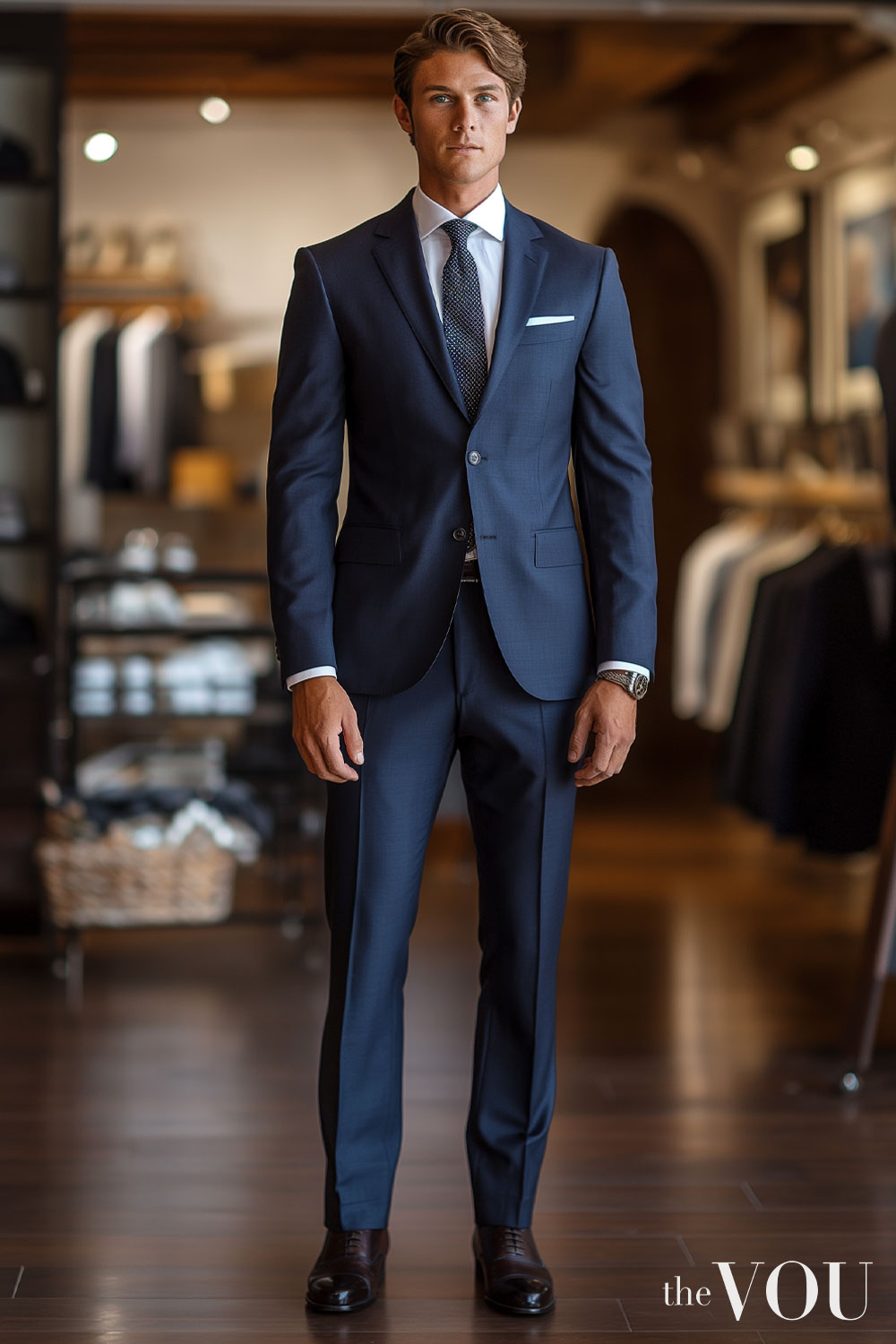
The modern tailored suit has stylistic roots in French aristocratic fashion.
The precursor to today’s suit was popularised by Louis XIV, who required courtiers to wear a long coat, a waistcoat, and a cravat at court, establishing the foundations of formal menswear.
Parisian tailors on Rue du Faubourg Saint-Honoré have been crafting bespoke suits for the aristocracy since the 18th century, establishing Paris as a centre of men’s tailoring.
White Dress Shirts
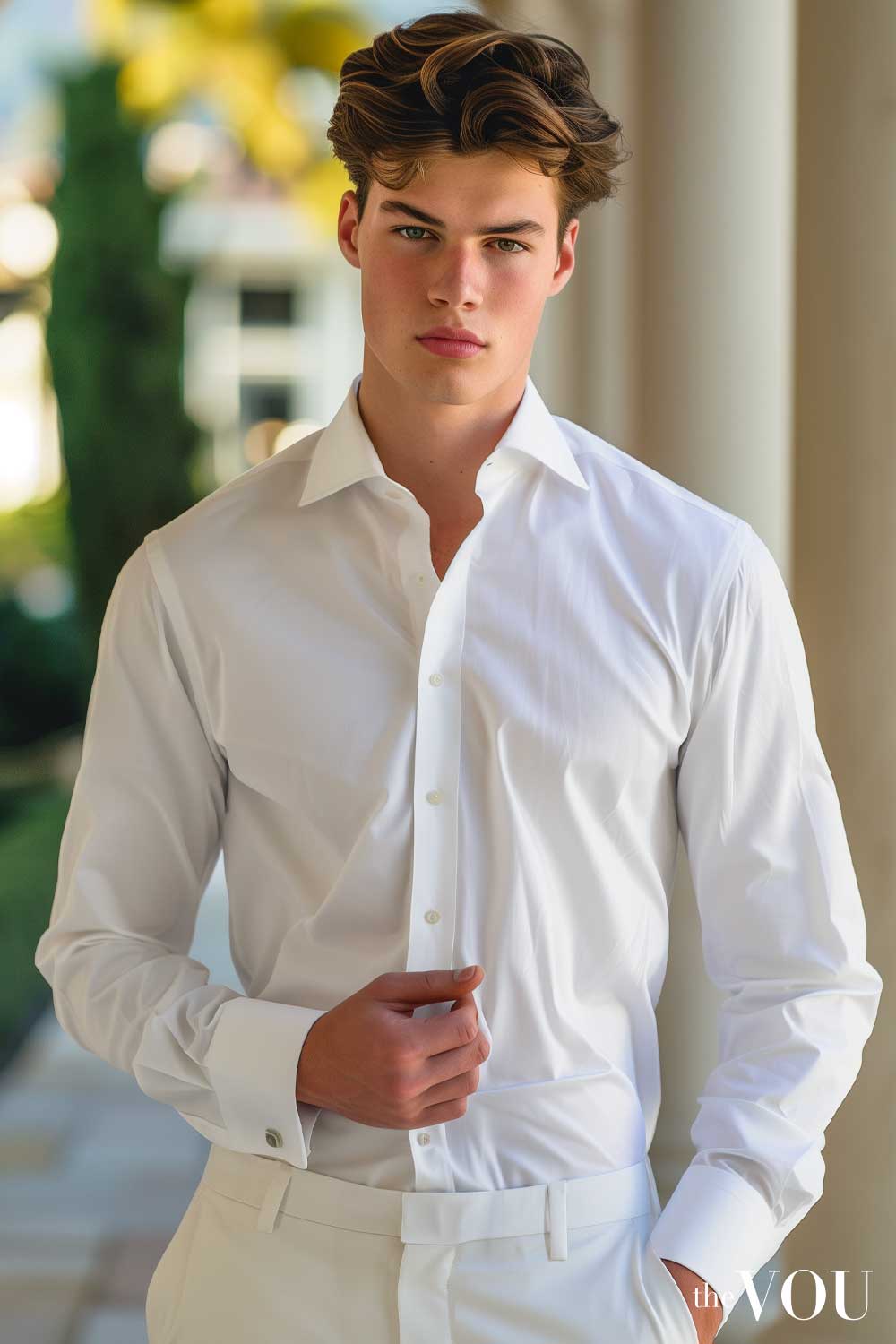
The white dress shirt became a staple of French aristocratic wardrobes during Louis XIV’s reign.
The Sun King mandated white linen shirts at court as a symbol of cleanliness and refinement.
This tradition continued with Parisian tailors like Charvet, founded in 1838, catering to the aristocracy with exquisitely crafted white shirts.
The house of Charvet became a favourite of French nobility, including Napoleon III, solidifying the white shirt’s status as a symbol of aristocratic elegance.
Oxford Button-Down Shirts
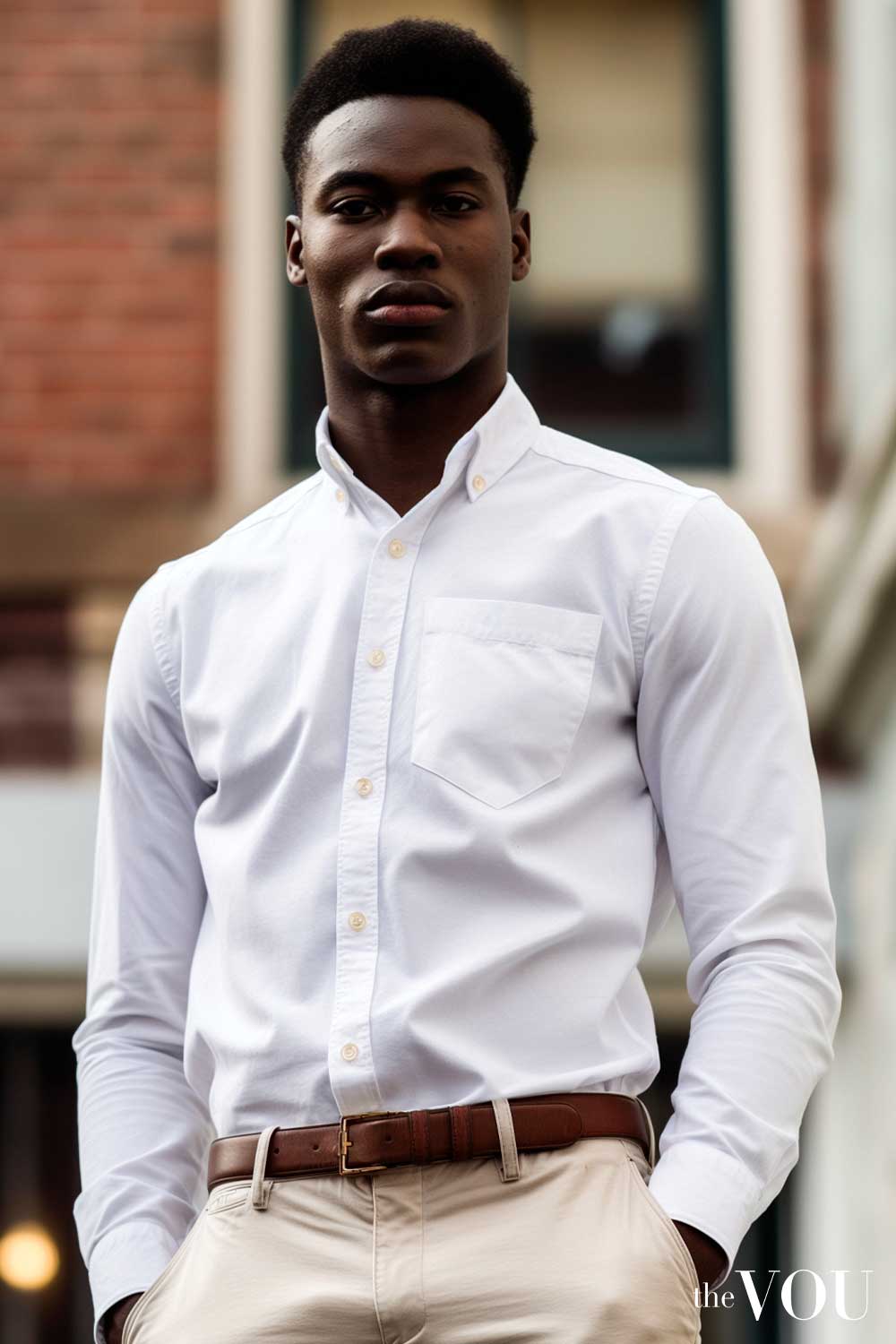
While originating in England, the Oxford shirt was embraced by Parisian society in the mid-20th century.
It became a symbol of casual refinement, often worn by French intellectuals and artists from affluent backgrounds.
The button-down collar—initially seen as too casual by traditional aristocrats—was popularised in the 1960s by the young, fashion-forward upper class of the “Rive Gauche.”
Polo Shirts
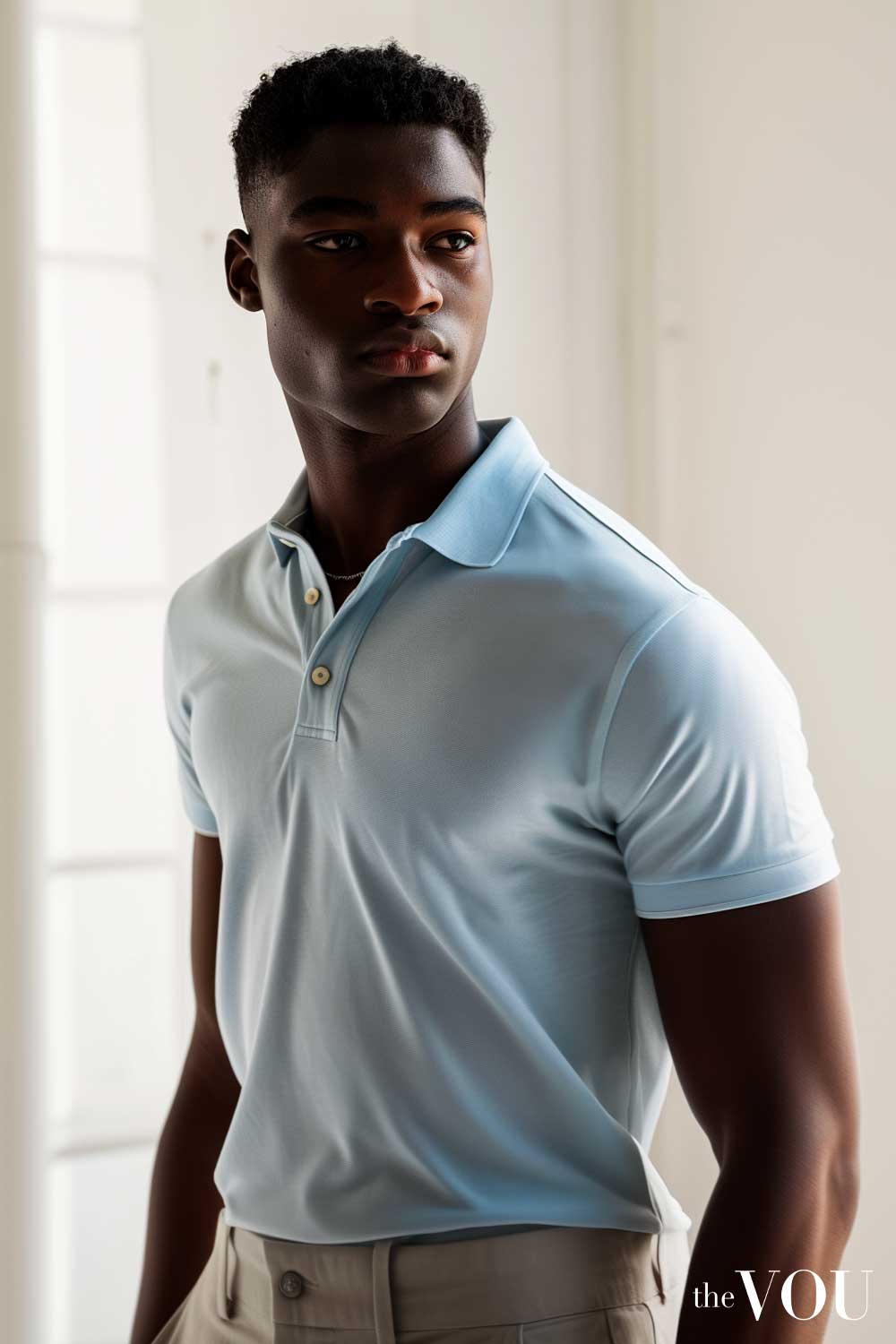
The modern polo shirt, created by René Lacoste, was adopted by the French upper classes for casual sporting events.
The polo shirt became a symbol of leisure and affluence in coastal aristocratic enclaves like Biarritz and Deauville.
Lacoste’s crocodile logo became a discreet signifier of social status, worn by the Agnelli family and other European aristocrats during their French Riviera holidays.
Breton Stripe Tops

Originally worn by French navy seamen in Brittany, the Breton stripe top was introduced to high fashion by Coco Chanel in 1917.
Symbolising nautical chic and artistic bohemianism, the Breton stripe top is a favourite of the artistic Parisian elite.
Notably, it was adopted by artistic circles frequented by aristocrats, such as the Café de Flore set, which included Jean-Paul Sartre and Pablo Picasso, helping to blur the lines between high society and avant-garde culture.
Cashmere Sweaters
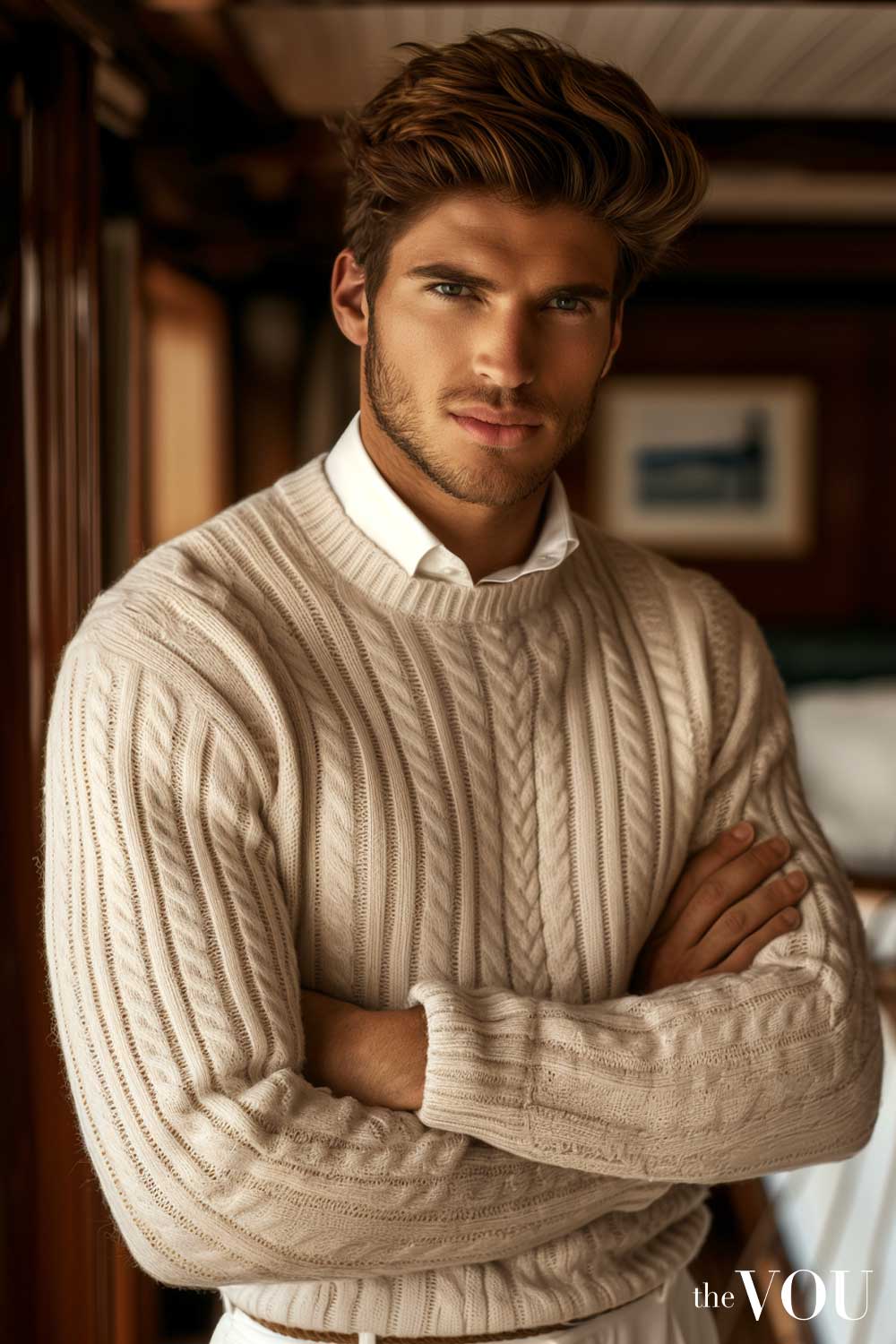
Cashmere became a status symbol in France during the 19th century, with Napoleon III’s wife, Empress Eugénie, known for her extensive collection.
The Parisian aristocracy followed suit, with fine cashmere sweaters becoming a hallmark of understated luxury.
The house of Hermès, originally a harness workshop catering to the nobility, began producing cashmere knitwear in the early 20th century, further cementing an association with French aristocratic style.
Black Turtlenecks
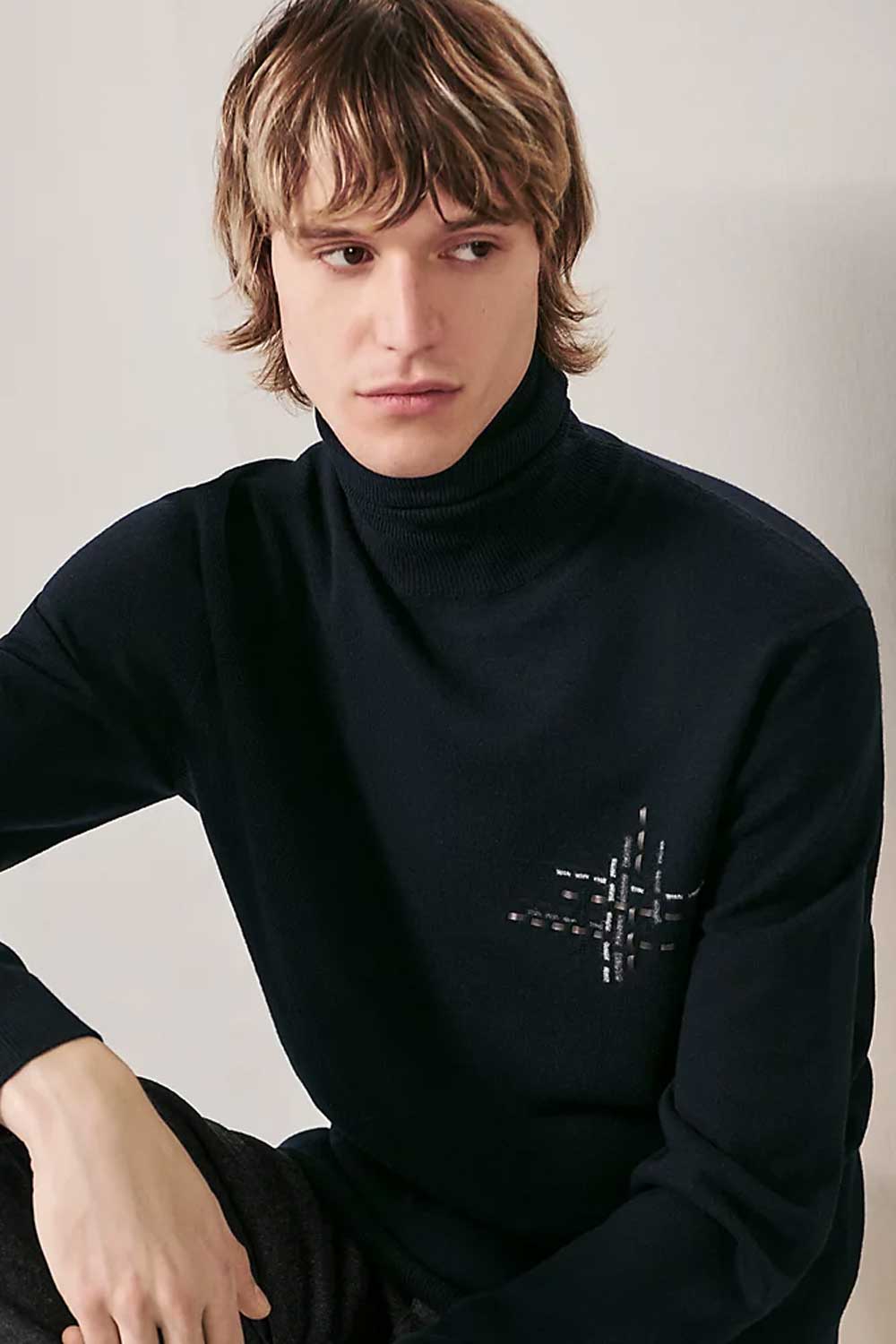
The black turtleneck became associated with Parisian intellectuals and artists in the 1950s and 60s.
It was adopted by aristocratic circles to project an air of cultured sophistication, often paired with tailored jackets for evening events.
This look was popularised by figures like Yves Saint Laurent, himself from an affluent colonial background, who included it in his iconic “Le Smoking” ensemble, blending aristocratic refinement with avant-garde sensibilities.
Slim-Fit Chinos
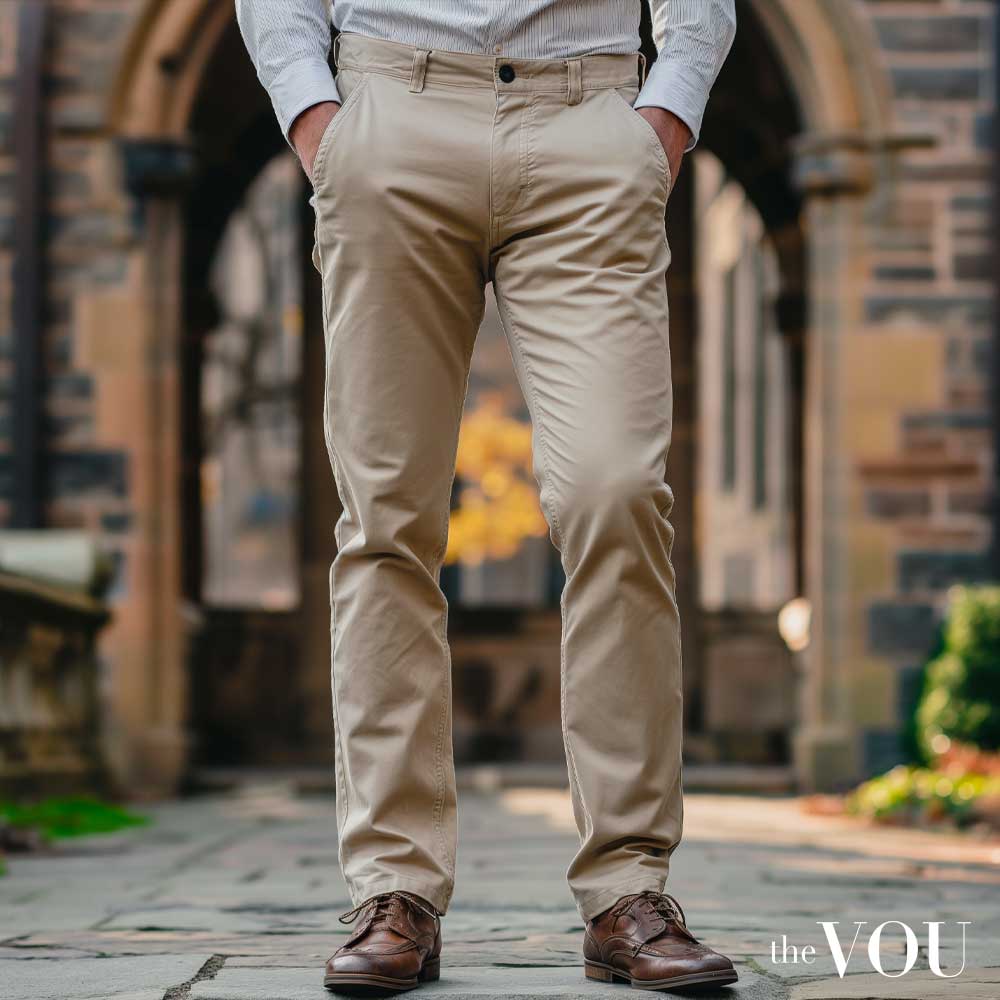
While originally American, chinos were adopted by French colonials returning from Indochina in the early 20th century.
They gained popularity among the Parisian upper classes in the 1950s and 60s, worn as a casual alternative to flannel trousers.
The slim-fit style became particularly associated with the young, fashion-forward aristocrats of the Left Bank.
Hubert de Givenchy, son of noble parents, loved wearing chinos when relaxing at his country estate, influencing their adoption among the French elite.
Gray Flannel Trousers
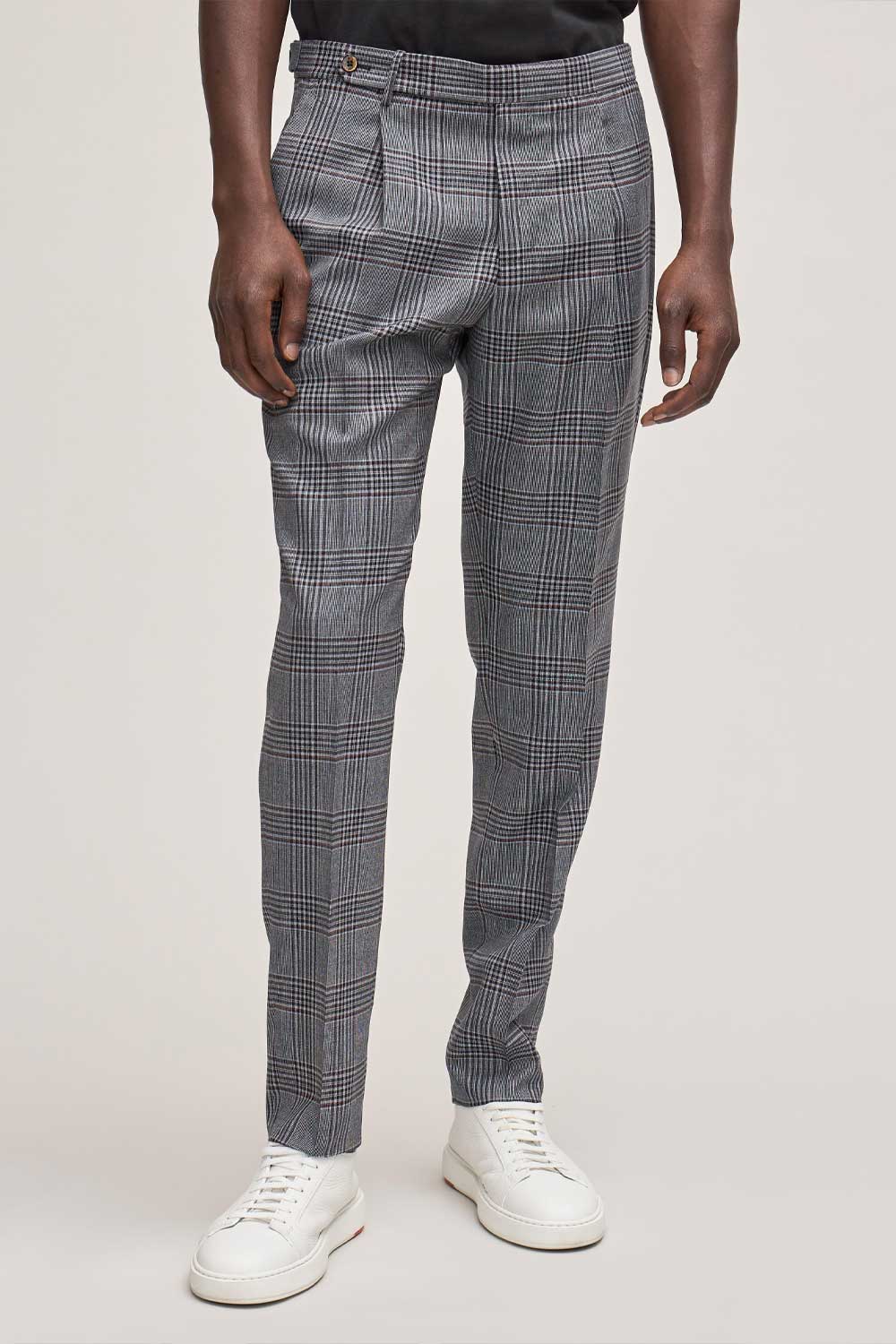
Flannel trousers have been a staple of French aristocratic casual wear since the early 20th century.
The Duke of Windsor, who spent much time in Paris and was closely watched by French society, popularised them as an alternative to formal trousers for daytime events.
French tailors on Rue du Faubourg Saint-Honoré perfected the cut of flannel trousers, creating an elegant and comfortable silhouette ideal for the leisurely lifestyle of the upper classes.
Dark Wash Slim-Fit Jeans
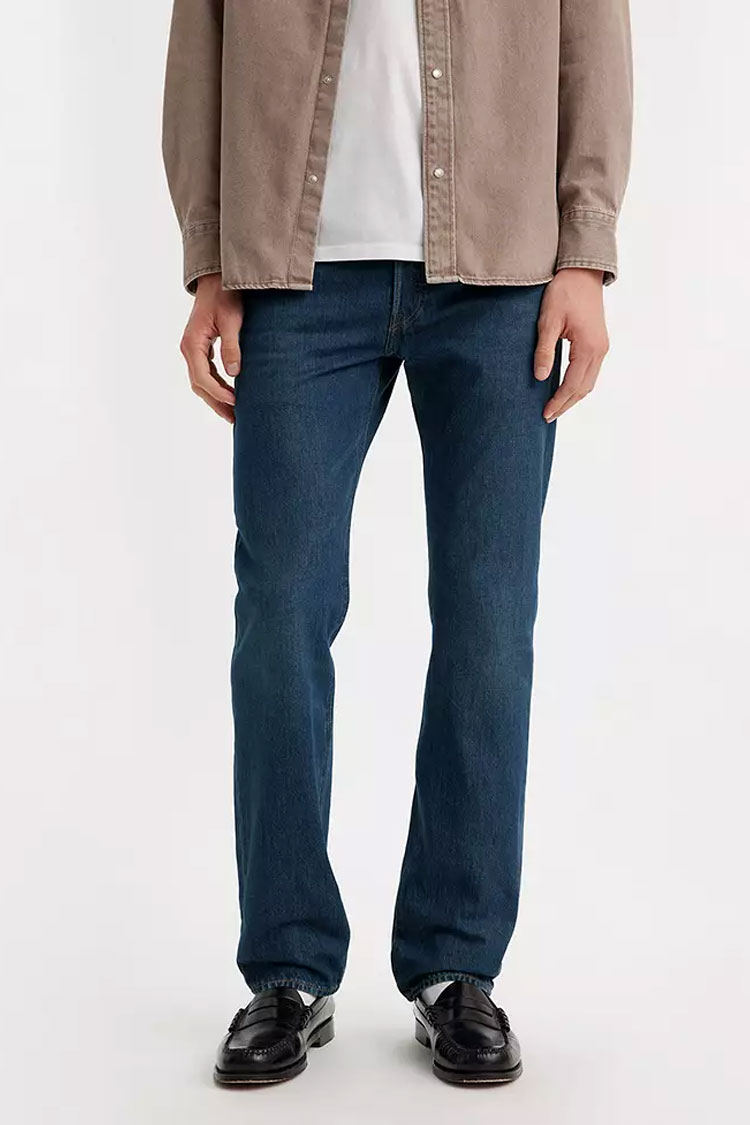
Jeans, though American in origin, were adopted by the French aristocracy in the 1960s.
Serge Gainsbourg, a Parisian icon with roots in the Russian nobility, popularised slim-fit jeans among the upper echelons of society, pairing them with tailored jackets for a look that blended casual and formal elements.
This style was quickly embraced by the younger French aristocrats, who wore it to fashionable nightclubs like Le Palace, challenging traditional dress codes.
White Sneakers
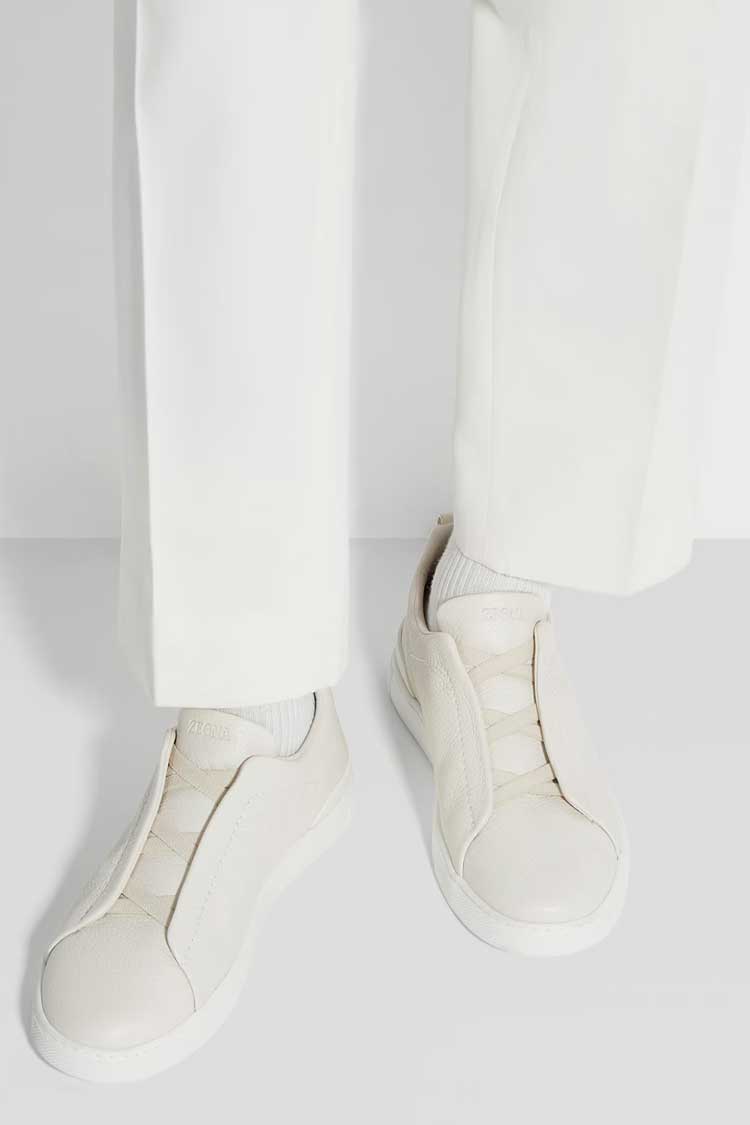
While not traditionally aristocratic, white sneakers entered high society through French tennis culture.
The Lacoste tennis shoe, created by French tennis champion René Lacoste in 1963, symbolised sporty elegance among the Parisian elite.
These sneakers’ clean, minimalist design aligned with the understated luxury favoured by French aristocrats.
White sneakers were mostly worn by spectators from noble families at the French Open, gradually becoming acceptable for casual wear beyond the tennis court.
Lightweight Scarves
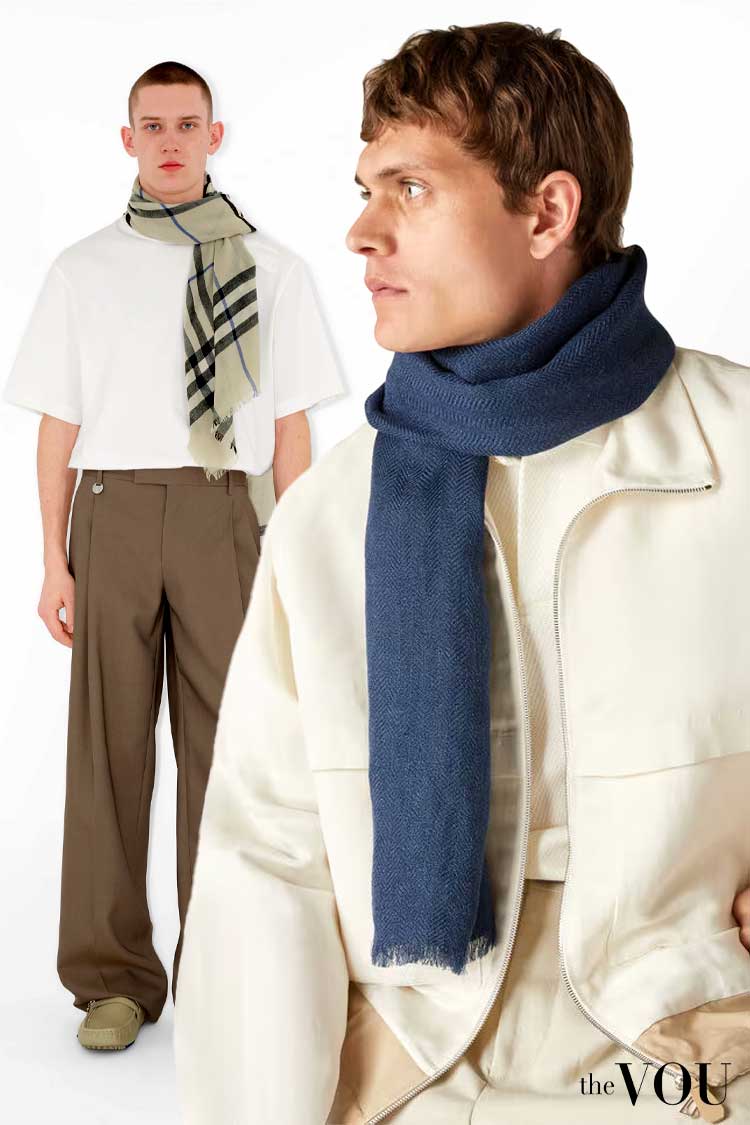
The silk scarf has been a staple of French aristocratic style since the 17th century.
Originally a symbol of nobility, silk scarves evolved into versatile accessories after the house of Hermès began producing silk scarves in 1937 to become the favourite brand of the French aristocracy.
These scarves, with their intricate designs often featuring equestrian motifs, became a subtle way for the upper classes to display their heritage and taste.
The art of tying a scarf was passed down through generations of noble families, each having their preferred knots and styles.
In the mid-20th century, the lightweight wool scarf gained popularity among Parisian intellectuals and artists from aristocratic backgrounds.
Figures like Jean-Paul Sartre and Albert Camus were often seen wearing casually draped scarves, a look that was quickly adopted by the younger generation of the French upper class.
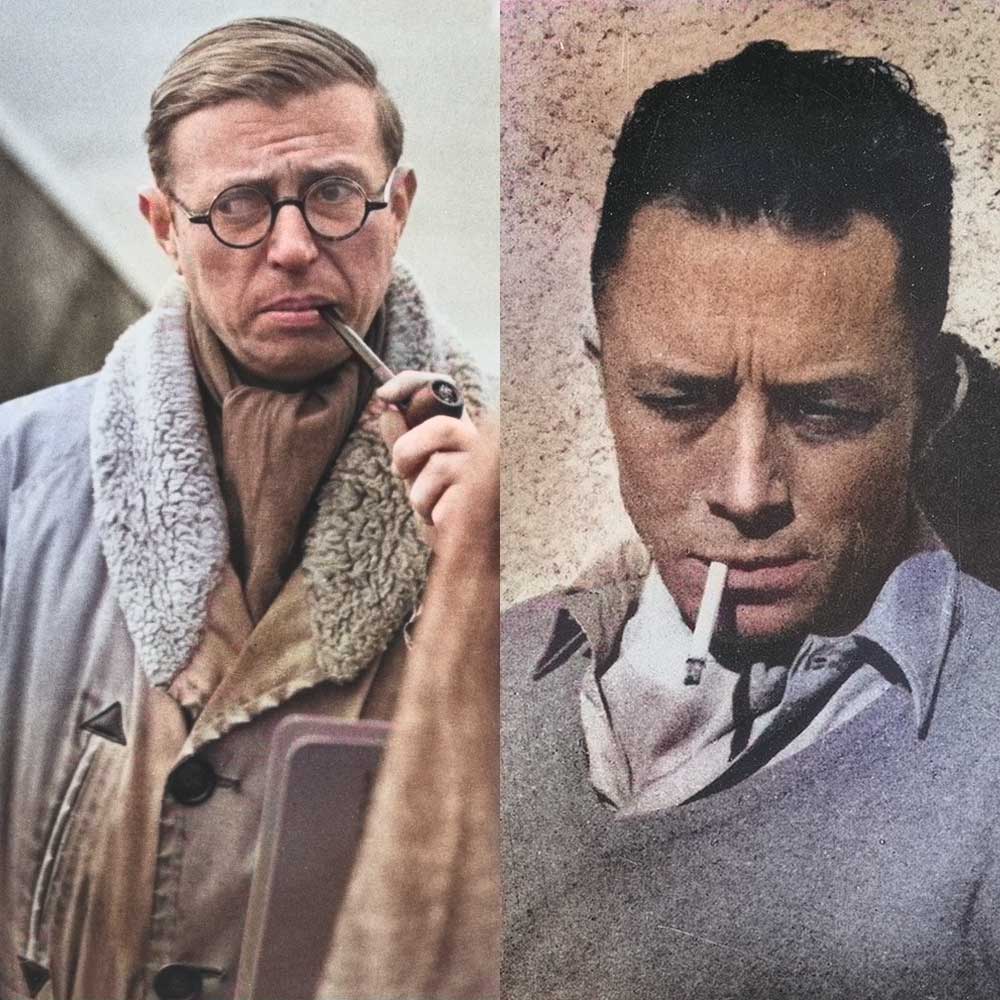
This style became a way for aristocrats to align themselves with Paris’s intellectual and cultural elite, blending their traditional background with a more bohemian image.
The French aristocracy also popularised the use of scarves in unexpected ways. Silk scarves were sometimes used as makeshift pocket squares, adding colour to a tailored jacket.
This creative approach to accessorising became a hallmark of Parisian chic, demonstrating the wearer’s confidence and individual style.
Today, a lightweight scarf casually draped around the neck remains a quintessential element of Parisian chic.
It’s a nod to the long history of French aristocratic style while also embodying the effortless elegance that characterises modern Parisian fashion.
Whether in silk for more formal occasions or fine wool for everyday wear, the scarf continues to be a subtle signifier of taste and sophistication in French society.
Parisian-Chic Style Outfit Ideas by Season
Spring
Here’s an excellent outfit idea perfect for strolling along the Champs-Élysées or enjoying an espresso at a sidewalk café.
Start your spring outfit with a hopsack weave navy blazer – the cornerstone of Parisian Chic – paired with a white Oxford shirt with the top button undone.
Continue with beige chinos cut slim through the leg and cropped just above the ankle for a quintessentially Parisian silhouette and white leather sneakers.
Accessorise with a lightweight silk scarf in muted paisley shades of blue and grey draped loosely around your neck, allowing the ends to peek out from beneath your blazer.
Complete the look with tortoiseshell sunglasses and a simple leather watch with a brown strap.
Summer
Here’s a stylish ensemble perfect for a day on the French Riviera or an evening at a chic beachside bar in Saint-Tropez.
Start your summer outfit with a classic Breton stripe top, slightly looser in fit, to keep you cool in the summer heat.
Continue with slim-fit dark wash jeans, rolled up once at the ankle, creating a timeless French coastal look.
Layer with a lightweight leather jacket in rich cognac, adding an edge to the nautical-inspired base and providing warmth for cool coastal evenings.
Slip into brown leather loafers without socks, a favourite look of the French upper class when vacationing on the coast.
Accessorise with classic aviator sunglasses and a woven leather bracelet for that perfect touch of casual elegance.
Autumn
Here’s a sophisticated outfit ideal for an afternoon at a Left Bank art gallery or an evening at a jazz club in Saint-Germain-des-Prés.
Begin your autumn ensemble with a fine-gauge cashmere sweater in a rich burgundy, the epitome of understated luxury.
Pair this with grey flannel trousers, cut straight and ending with a slight break at polished brown suede Chelsea boots.
Layer with a classic beige trench coat, left open to reveal the rich tones beneath.
Add a silk pocket square in deep forest green, peeking from your trench coat’s breast pocket.
Complete the look with a vintage-inspired leather-strap watch and tortoiseshell reading glasses for an intellectual touch.
Winter
Here’s an elegant winter outfit perfect for attending a concert at the Philharmonie de Paris or dining at a Michelin-starred restaurant.
Start with a charcoal grey suit in a subtle herringbone pattern. The jacket is cut close to the body, and the trousers are tapered but not tight.
Underneath, opt for a black fine-knit merino wool turtleneck, adding warmth without bulk.
Layer with a camel hair overcoat; its clean lines and neutral tone complement the suit beautifully.
Choose black cap-toe Oxford shoes, polished to a high shine, and matching black leather gloves.
Accessorise with a white silk pocket square folded into a crisp peak and a minimalist silver tie clip used to secure your overcoat at the neck when the wind picks up.
Parisian Chic Style Do’s and Don’ts
| Do | Don’t |
|---|---|
| Purchase and wear high-quality classic garments | Buy fast-fashion or trendy clothes |
| Prioritise fit and tailoring | Don’t wear oversized clothes |
| Stick to a natural colour palette | Don’t wear flashy colours or patterns |
| Accessorise subtly | Over-accessorise or wear flashy jewellery |
| Embrace the ‘less is more’ philosophy | Try too hard or appear overly styled |
Do
Wear top-quality, timeless garments
The foundation of Parisian Chic is a wardrobe of well-made, classic items. Invest in a perfectly tailored navy blazer, a quality trench coat, and well-cut trousers.
These pieces will serve you well for years, embodying the French appreciation for longevity and style over fleeting trends.
Prioritise fit and tailoring
Proper fit is crucial in Parisian style. Ensure your clothes are tailored to your body shape.
Trousers should have the right break, jackets should fit perfectly on the shoulders, and shirts should be neither loose nor tight.
A well-fitted garment elevates even the simplest outfit.
Stick to a neutral colour palette
Parisians favour a sophisticated, muted colour palette so build your wardrobe around neutrals like navy, grey, beige, and white.
These colours are easy to mix and match, creating a cohesive and elegant look.
Master the art of subtle accessorising
Accessories should complement, not overwhelm, your outfit.
A carefully chosen watch, a quality leather belt, or a silk pocket square can add personality to your look without appearing ostentatious.
Embrace the ‘less is more’ philosophy
Parisian style is about understated elegance. Aim for simplicity and refinement in your outfits.
A crisp white shirt paired with well-cut trousers can be more impactful than an overly complicated ensemble.
Don’t
Don’t follow fast fashion trends
Resist the urge to buy into every passing trend. Fast fashion items often lack the quality and timeless appeal that are hallmarks of Parisian style. Instead, focus on building a wardrobe of classic pieces that will stand the test of time.
Don’t wear oversized or ill-fitting clothes
Baggy or overly tight clothing is a definite no in Parisian fashion.
Avoid oversized T-shirts, sagging trousers, or jackets with wide shoulders.
The key is to find clothes that fit your body perfectly.
Don’t opt for loud, flashy colours or patterns
While a pop of colour can be stylish, avoid outfits dominated by bright or neon hues.
Similarly, steer clear of large, bold patterns or logos.
These can appear gauche and go against the subtle sophistication of Parisian style.
Don’t over-accessorise or wear flashy jewelry
Avoid wearing multiple statement pieces at once or sporting overly flashy jewellery.
A simple, elegant watch or classic cufflinks are often all you need to complete a Parisian-inspired look.
Don’t try too hard or appear overly styled
The essence of Parisian chic is an air of effortlessness. Avoid outfits that look too contrived or ‘put together’.
The goal is to appear stylish without seeming like you’ve spent hours in front of the mirror.
French Chic Style vs Similar Styles
BCBG (Bon Chic, Bon Genre) – This French style, associated with the upper-middle class, shares many similarities with Parisian Chic’s emphasis on quality and understated elegance. However, BCBG incorporates preppy elements and tends to be more conservative and traditional.
French Riviera Style – While Parisian Chic favours a more muted palette and tailored silhouettes, French Riviera style embraces colourful garments, lighter fabrics, and relaxed fits, reflecting the coastal, leisure-oriented roots.
Parisian Bobo (Bourgeois-Bohème) – This style combines elements of Parisian Chic with a more eclectic, artistic sensibility. While it emphasises quality and understated elegance, the Bobo style incorporates more vintage garments with artistic prints and unconventional pairings.
Preppy Style – Originating from American Ivy League schools, Preppy style shares Parisian Chic’s emphasis on classic pieces and quality. However, it tends to be more colourful and pattern-heavy, with a distinctly American aesthetic.
Italian Old Money Style – The Italian aristocratic way of dressing shares Parisian Chic’s focus on well-tailored clothes from high-quality materials but in brighter colours and patterns.
The Italian style also makes great use of sprezzatura or studied nonchalance.
British Sloane Ranger Style – Associated with upper-class young people in London, this style shares some elements with Parisian Chic, such as the emphasis on quality.
However, the Sloane Ranger look is more traditional and less minimalist.
Parisian Chic style, rooted in French aristocratic fashion, continues to captivate and inspire men’s fashion worldwide.
Its enduring appeal lies in its perfect balance of sophistication and nonchalance, a combination that seems effortless but is, in fact, carefully cultivated.
However, it’s important to remember that true Parisian Chic is not about slavishly following rules but developing a personal style that reflects these ideals.
It’s about finding the perfect balance between respect for tradition and individual expression.
In today’s fast-paced fashion world, where trends come and go at dizzying speeds, the timeless elegance of Parisian Chic offers a refreshing alternative.
It encourages a more thoughtful, sustainable approach to dressing that values quality over quantity and classic styles over ephemera fast-fashion trends.
Ultimately, Parisian Chic is more than just a way of dressing but a philosophy that extends to one’s entire approach to life.
Style Like A True Gentleman
Before we say goodbye, here’s one of the best-kept secrets in men’s styling circles, a secret that only a few expert image consultants know or are willing to share.
First and foremost, professional styling requires knowing your unique body shape and seasonal colour palette – paramount factors in choosing perfectly fitting clothes in colours that complement your skin, eyes, and hair.
Only then can a stylist engage in styling by occasion, location, season, and time of day, with garments, footwear, and accessories from stylistically relevant heritage fashion brands to depict high confidence and success.
Best part? You can find your body shape, seasonal colour palette, and ideal fashion style in less than 5 minutes by yourself, for free, thanks to our four simple steps:
1. Find Your Body Shape
Different garments flatter different silhouettes, so knowing your body shape is the first step in dressing like a confident man.
To find out your unique body shape, take our free body shape quiz for men.
Once you know your unique body shape, take the second free quiz to discover your unique colour palette.
2. Find Your Unique Colour Palette
Remember, the garments that compose your outfits come in various colours, and you must ensure that each hue complements your natural colour.
To do that, you have to find out your seasonal colour palette, and you can do it by taking our free seasonal colour quiz for men.
3. Find Your Ideal Fashion Style
By now, you should already know your body shape and unique colour palette; the next step is to discover your ideal personal fashion style.
The fastest and simplest way is to take our free fashion style quiz for men; it includes your ideal style, outfit ideas, relevant fashion brands, and much more.
4. Professional Image Consultancy with The VOU
And if you want to style like a professional, by occasion, location, season, and time of the day, you can always ask our expert image consultants and fashion stylists for help.
Our styling services for men are the most comprehensive and detailed on the market, backed up by leading stylists who will guide you step by step in creating looks that communicate affluence, elegance, and endless accomplishments.
Remember, wearing luxury brands isn’t enough; to look stylish, confident, and successful, you must first know your body shape, colour palette, and ideal personal style, and only then style by occasion, location, season, and time of day.
Contact us today to save headaches, time, and money – it’s time to dress like a confident, successful gentleman of exquisite fashion taste – the first styling assessment is on us!
With over twenty years of front-row fashion and styling events, collabs with haute-couture houses, and a PhD in Luxury Fashion, Laurenti is an expert in crafting personalised looks that depict old-money sophistication.
With years of expertise in high-end fashion collabs and a PhD in Sustainable Fashion, Ru specialises in eco-luxe wardrobes for the modern gentleman seeking understated refinement.


